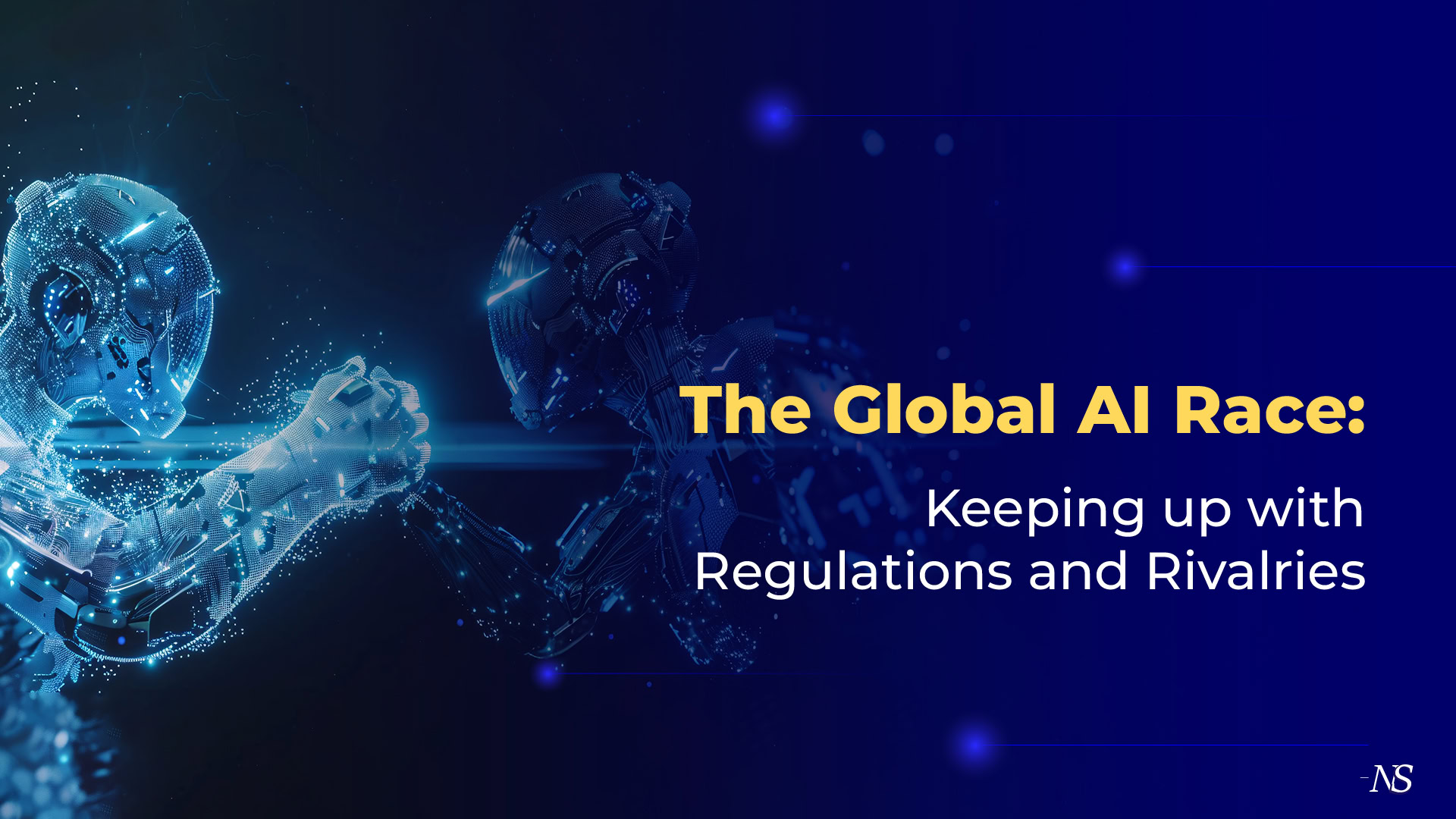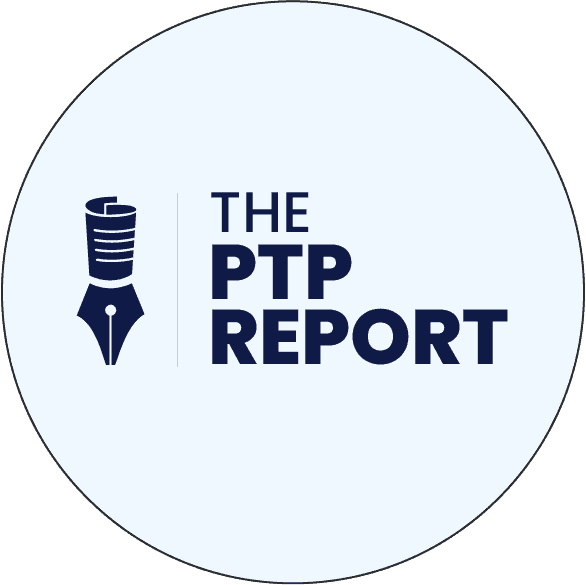There are a lot of things for business leaders to wrangle right now as they try to get a handle on AI:
- What are my real, practical use cases?
- How do I best balance effectiveness and cost?
- How do I ensure safety, security, and effective governance?
- How do we stay adaptive and flexible with innovations coming so fast?
- What do we do about hallucinations and who’s ultimately responsible?
- How do I get my team really on board and invested?
And of course, how do I stay legally compliant and on top of shifting regulations?
The technology is changing so fast, and with the scale of these investments, that’s not stopping anytime soon. This makes it very hard to regulate and govern.
Add to this global conflicts and volatility, and it’s a recipe for chaos.
Our PTP Report just finished its bi-monthly roundup which works to cover the AI news (you can find Part 1 here and Part 2 on company updates here), so today I want to check in on the state of global AI, in an effort to gauge regulatory trends as the domestic situation is changing fast.
Global AI Geopolitics: AI as Infrastructure
The worldwide race to keep up with AI is only intensifying, with companies across the world understanding they will need access to the best available AI to keep pace.
In many cases, this becomes a national issue, with the US and China dominating and performance for those furthest away from the top data centers notably impacted.
The US China AI Rivalry Impacts the Entire World
The US and Chinese domination of AI continues, with research from Oxford University, as reported by The New York Times, giving several key examples:
- These two nations alone currently operate 90% of the data centers used by other companies and nations for AI.
- The USA has 87 AI computing hubs (two-thirds of the world’s total), and most are from top companies Amazon, Alphabet/Google, and Microsoft. US companies are also actively building 63 additional AI computing hubs internationally.
- To accelerate data center growth, the Trump administration is reportedly working on a series of executive actions meant to make energy more rapidly available for AI data centers (this from Reuters).
- China, meanwhile, has 39 AI computing hubs, from their top companies Tencent, Alibaba, Huawei. They’re also building 19 hubs outside their own borders.
- Along with the EU (which has six AI computing hubs from top companies Exoscale, Hetzner, and OVHcloud), the US and China account for more than half the world’s top data centers overall, and only 16% of countries in the world have any at all.
- Among other nations, India is next with at least five, and Japan with at least four. The nations of Africa and South America have almost none.
- According to the United Nations, just 100 companies are making 40% of the world’s total AI investment, and the vast majority of the GPUs in these data centers come from a single company: Nvidia.
Combatting AI Compute Shortage
Instead of regulating, it appears most nations are devoted to playing catch up.
With AI compute gaining on oil as currency for international power, countries around the world are seeking their own sovereign AI—treating it as a resource, like electricity, that must be developed as infrastructure to prevent falling further behind.
Without their own data centers, companies abroad can be forced to prioritize AI work when US companies are offline, for example, to get better performance.
To combat this, many nations are offering up land and energy cheap, fast-tracking development, and short-cutting things under their control, like permits.
Consider the scale of investments: the EU has pledged €200 billion for AI and new data centers across their member nations, the Indian government is subsidizing compute and making its own AI models built on domestic languages, Brazil has pledged $4 billion for AI projects, and Argentina is seeking to develop small nuclear reactors (SMR) to be commercially available for power.
According to The New York Times, the company Cassava is leading a $500 million investment in data centers to open Africa’s first advanced data centers this summer.
But this will only scrape the surface of local demand. Including chips from Nvidia and Google investment, this project is only expected to address 10–20% of Africa’s AI needs, with some 3,000 startups already jockeying to get access.
Compare this to the US, where Harvard’s Kempner Institute has more AI computing power than all of the African nations combined.
It’s still early days for AI, and though AI data centers require enormous investment, it’s worth noting that similar global gaps in internet coverage existed more than a decade ago before coming down rapidly. In 2012, for example, there was only 33% internet coverage, vs 68% coverage last year, per the International Telecommunication Union.
US AI Policy and Regulatory Trends
Investments are surging in the US, and OpenAI’s $60 billion data center project in Texas (which the Times reports will be bigger than Central Park and have its own natural gas plant), will be one of the world’s most powerful AI computing hubs when done.
It will soon have competition, however, with one of the world’s largest data centers (10 square miles, drawing the power equivalent of five nuclear reactors) being built in conjunction with US companies overseas, in the UAE.
[For more on this, we profiled Middle Eastern investments and the changing US AI strategy from the US in an article from June.]
The Fight over State AI Regulation in the USA
All eyes are on the US for now, as the national and state governments wrestle with finding the right AI regulation vs innovation mix.
At a national level, the US government has yet to replace its revoked Biden-era policies, but all 50 states have stepped into the vacuum, with some form of legislation to govern AI use either in place or being considered.
As mentioned in Part 1 of our roundup per White & Case, Arkansas, California, Kentucky, Maryland, Montana, Utah, and West Virigina have all recently enacted new state laws or policies, joining existing regulation from states like Colorado, Illinois, Tennessee, and New York.
A provision in the so-called Big Beautiful Bill for AI would have banned state regulations for 10 years to prevent this varied regulatory landscape, but this was first whittled down to five and ultimately removed entirely by the Senate before being signed into law on July 4 by President Trump.
While this patchwork system of state regulations will unquestionably be challenging for companies to deal with, the proposed moratorium was highly unpopular across the country, with 40 attorneys general of US states and 250 state lawmakers from both parties joining together to press Congress for its removal.
In a loud message on the subject of AI regulation, an unusually unified 99–1 vote of senators from both sides of the aisle and all around the nation agreed to let state AI regulations proceed.
Despite AI industry lobbying from companies like Andreessen Horowitz and OpenAI to get the state ban passed, there’s a growing pressure on the nation’s leaders for more regulation.
An article released yesterday by Grace Huckins for MIT Technology Review details this movement, pointing out how political voices as different as Marjorie Taylor Greene and Pete Buttigieg are finding overlap in this area.
Greene posted on X that she strongly opposes limiting states, as we can’t know where AI will be in ten years. Buttigieg, meanwhile, posted an article on Substack titled We Are Still Underreacting on AI.
The former transportation secretary and McKinsey consultant wrote that he believes AI disruption could rival the Enlightenment or Industrial Revolution for its impact on society, and that it’s not about being for or against it (as it’s here to stay regardless), but rather for regulation to ensure that AI leads to “more abundant prosperity and safety” and not the alternatives.
There are still efforts to check regulations coming, with Senator Ted Cruz planning his own bill, but it seems extremely likely that more, not less, regulation is coming for AI in the US.
In the short term, this means soon having to navigate 50 potentially unique sets of laws and guidelines.
Also of note on this topic:
- Company appetites for national AI regulations have varied wildly, with OpenAI’s Sam Altman admitting he’s changed his opinion to favor less regulation, while Anthropic’s Dario Amodei recently called for more regulation, detailed in an op-ed he wrote for The New York Times. Amodei cites lessons learned in developing Claude 4 and makes a case for a national transparency standard.
- Globally, AI researchers from the US, EU, and Asia recently came together in Singapore ahead of next year’s summit in India. The goal was to bridge the US-China divide for AI safety, and representatives from OpenAI, Meta, Google DeepMind, Anthropic, and11 nations (including the US, China, and EU) attended. Unlike in Paris, agreement was reached around making risk thresholds, truthful/safe training, and checking against safety standards around jailbreaking.
On the subject of AI chip export restrictions, the recent US China AI trade agreement that lowered tariffs is understood to include swapping of rare earths from China for eased tech restrictions from the USA.
And while the full details aren’t known, it’s been reported by Reuters that this includes restoring access to chip design software from companies like Synopsys, Cadence Design Systems, and Siemens, as well as ethane exports.
Other AI Investments in the USA
The national US AI news hasn’t all been about state vs federal AI laws.
In May, plans were announced for a new Department of Energy supercomputer called Doudna, in honor of CRISPR pioneer and Nobel Prize winner Jennifer Doudna.
Being built in partnership with Dell and Nvidia, it will use the latter’s new Vera Rubin platform and is expected to be 10 times faster than the Berkeley Lab’s current machine. It should see use for training AI models and conducting simulations.
This joined with other big investments in the US including:
- American memory company Micron is investing $200 billion in US memory facilities with support from the US government, and South Korea’s SK Hynix is also building a new plant in Indiana as part of its $3.8 billion project.
- Japan’s Softbank has pitched a $1 trillion US AI hub to be built in Arizona to the government and is seeking TSMC assistance, according to Bloomberg.
- A number of large AI government contracts have been recently announced between AI firms and the US military. This included a $200 million deal for OpenAI and Meta partnering with Anduril for augmented reality headsets for soldiers, as well as Palantir’s $480 million contract (with a reported $795 million ceiling) for a Maven Smart System for military intelligence. The move even accompanied a swearing-in of top executives from the three companies as senior military advisors on a part-time basis.
Conclusion
Based on the reactions of state governments and senators from both sides of the aisle, we may well be at the low-water mark on AI regulations.
And while the federal government is committed to deregulation and working to promote and power data centers as fast as possible, state governments are taking up regulation on their own almost across the board.
Internationally, there is now a reduced interest for the time being, as countries race to keep up with US and Chinese advances, but the scenario for companies everywhere remains a moving target.
While the power of AI continues to grow and the US remains at the forefront, it will take ongoing vigilance, adaptability, and transparency to ensure integrated solutions are ready and auditable for upcoming regulations on decision making, privacy, and security.
References
Why the AI moratorium’s defeat may signal a new political era, MIT Technology Review
The Global A.I. Divide, The New York Times
Argentina hopes to attract Big Tech with nuclear-powered AI data centers, Rest of World
From California to Kentucky: Tracking the Rise of State AI Laws in 2025, White & Case
Dell, Nvidia, and Department of Energy join forces on “Doudna” supercomputer for science and AI, Tech Spot
Micron to invest $200 billion in US memory facilities, Yahoo Finance
Oracle, OpenAI Expand Stargate Deal for More US Data Centers, Masa Son Pitches $1 Trillion US AI Hub to TSMC, Trump Team, Bloomberg
OpenAI wins $200 mn contract with US military, AFP
How Big Tech learned to love America’s military, Quartz
As trade war truce with China holds, US lifts curbs for chip design software and ethane, Exclusive: Trump plans executive orders to power AI growth in race with China, and Pentagon awards $480 million deal to Palantir for ‘Maven’ prototype, Reuters
Army bringing in big tech executives as lieutenant colonels, Task & Purpose
There is a global consensus for AI safety despite Paris Summit backlash, new report finds, Euronews





